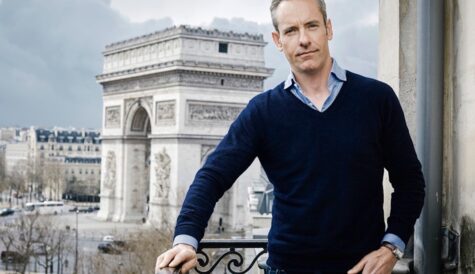Opinion: How to grow branded entertainment & avoid pitfalls
TBI resident commercial & brand expert Luci Sanan provides a checklist for producers looking to tap the fast-growing revenue streams in branded content & explains why rights still matter
The branded entertainment space is evolving and it is growing. Fast.
More producers are stepping into this world and are somewhat underprepared for the challenge. But with the challenge, comes great revenue making opportunity.
Advertisers are increasingly investing in long-form programming to tell their story and to capitalise on the emotional connection with the consumer. The broadcast community should see them VIP clients. Build relationships, understand their needs, pitch projects that are relevant to them, invest in adequate resource and competent expertise in this space. Those who can evolve in this new terrain, will reap the benefits.
Step by step
Firstly, be clear that your time and expertise has value. That is after all why brands want to access producers from outside their creative agency and the typical branded content space.
A complaint I commonly here from production companies is that they did a lot of work and never heard back, which is not acceptable in my book. It’s vital to be clear with expectations right from the outset.
Ask the agency, or brand directly what budget has been signed off; have they definitively decided they are going to finance a TV programme, or are they just musing over the idea? Are they talking to other companies? Furthermore, before you engage your development resource to come up with new ideas, do check the archive for anything you may already have which could be tweaked and save you time.
Missions & demands
Once in the door, make sure you pitch relevant material. There are brands for whom agencies are pro-actively looking for paper ideas, and there are those who want to step in to part financed projects. Some brands have clear cut briefs, some are more open to pro-active pitches for a variety of different editorial and commercial models.
Find out what they are looking for, in as much detail as possible and make it bespoke. Develop and understanding on what the brands are looking for, and why. Are they looking to reach a particular audience, in particular markets? Are they working with a specific media owner, or do they have any ideas already about what kind of content is going to work for them?
And don’t pitch the projects that every broadcaster has passed on. If their audience doesn’t want it, the brand won’t either.
Fingers in pies
Can you manage all the stakeholders? In a brand-funded production, there are more entities with expectations, deliverables, and timelines to manage than if you are working solely for your broadcaster client. There will likely be a media agency, perhaps a creative agency, sometimes a third-party agent, as well as everyone else already at the party.
Consider the value of your rights – some brands want IP ownership and back-end participation, some don’t. Some want international exposure through sales or media buys, and some don’t
Do not underestimate this. Regular calls with all stakeholders, and real clarity on the what, the why and the how for all parties is essential if it’s going to be a success.
It would not be unheard of for the agency/brand to have an exec on the production, and to need to see materials in conjunction with the broadcaster. Unlike broadcasters though, this may all be new to them, so they may in fact need additional comms and hand holding.
You need razor-sharp project management on this.
Furthermore, you must ensure you resource properly to avoid under delivering. Don’t blindly say you can deliver all the brand’s needs, only to realise they need a whole host of social content producing, international versions and more.
Can you manage it, or should the agency manage this for you? Don’t get halfway through the project to look more closely at the deliverables and realise you’ve not budgeted or staffed appropriately. Go out of your way to impress your client, and you will be on their list to call the next time they want to do some TV.
Value your rights!
Lastly, I urge you to consider the value of your rights and potential future revenue streams. Some brands want IP ownership and back-end participation. Some don’t. Some want international exposure through sales or media buys, and some don’t.
There are a variety of different models, but for the right projects, it’s possible to think about how you can create longer-term revenue streams beyond the shelf life of the brand’s campaign, so you can enjoy receiving royalty reports long after the brand has moved on from the project.
To draw on a couple of my own examples here, All Star Driving School, which aired on E4 several years ago in the UK, produced by Rumpus, went on to have success a format, funded by brands in multiple markets including Slovenia, Russia and two seasons in Latin America.
The original series was in partnership with Suzuki. From the same indie, The Great Garden Revolution, a Channel 4 commission with the brand Ronseal, was also sold as a completed programme in many markets, creating further value for the IP owner beyond Ronseal’s domestic needs. It’s worth bearing these opportunities in mind.
If this all sounds a bit difficult, rest assured I believe the vastness of opportunity far outweighs the hassle. With some trial and error and some proper expertise, the broadcast community will benefit creatively and commercially from the increased demand of branded entertainment.
Luci Sanan runs independent consultancy firm 53 Degrees North Media, set up to provided strategic and commercial consultancy producers, media owners and brands. She has previously worked for The Story Lab, DRG, Banijay International and Small World IFT.






